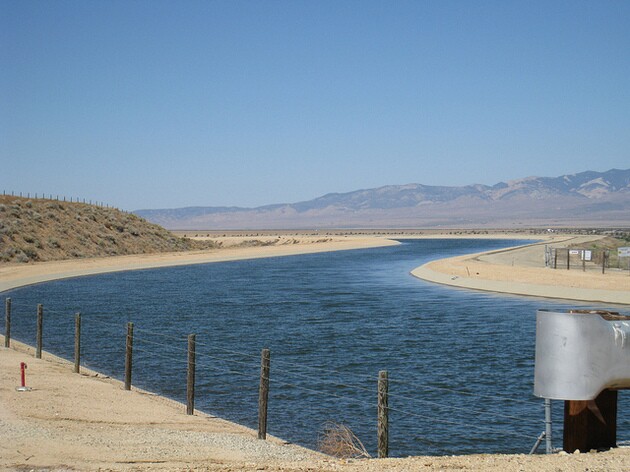California Boosts Water Deliveries, But Only by a Smidgen

The drought's still in full swing across the state, but the agency that manages the State Water Project is nonetheless expecting to deliver a bit more water this year than it had announced in December.
The California Department of Water Resources announced Thursday that it would be increasing water deliveries to State Water Project customers to 15 percent of the amounts those customers requested for the year. On December 1, the Department had forecast those deliveries would run only about 10 percent of what the State Water Project's customers had asked for.
The increase was made possible by a series of wet storms that hit the state in December, and careful management of runoff from those storms. But the minor increase still leaves an 85 percent shortfall in what those customers wanted, which just underscores the depth of California's continuing drought.
According to the announcement, the state's reservoirs stand at 60 percent of their average storage for this time of year, which is about 40 percent of the total capacity of those reservoirs. The 29 water agencies that receive water from the State Water Project had requested more than four million acre-feet of State Water Project water for the year. They'll be receiving just under 627,000 acre-feet.
(An acre-foot is the quantity of water it would take to cover an acre of land a foot deep. It's about enough to supply a California family of four for a year.)
"We cannot stress enough," said Department of Water Resources director Mark Cowin, "that water conservation will be critical in stretching our supplies to the maximum extent possible throughout the coming year."
Though many Californians have suggested the drought was eased by the storms in December, they made a mere dent, and no significant rain has been recorded in most of the state since December 21. The 2014 Water Year, which ended in September, was the third driest since record-keeping began in 1896. On top of two previous years of severe drought, that near-record year leaves a lot of deficit to make up, and the December storms didn't come close. No significant rain is forecast for the state in the near future.
Water experts in California are pessimistic that 2015 will get much better. Water pundit and Pacific Insitutute founder Peter Gleick wrote earlier this week that "it seems increasingly likely that California will not see enough precipitation to get out of the very deep deficit that three years of drought (so far) have produced."
The State Water Project delivers water from Northern California rivers to farms in the Central Valley and cities in Southern California. It supplies about 23 million Californians with drinking water.





